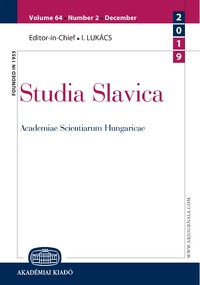The Architectonics of Sensibility in the View of the Theory of Cultural Transfer: Early Prose by Panteleimon Kulish
The Architectonics of Sensibility in the View of the Theory of Cultural Transfer: Early Prose by Panteleimon Kulish
Author(s): Artur Malynovs’kySubject(s): Ukrainian Literature
Published by: Akadémiai Kiadó
Keywords: anthropology; architectonics; history; sensibility; emotions; palimpsest; comparison; transfer
Summary/Abstract: Due to the expansion of the human issues to the text, various manifestations of emotionality are structured or hidden, unconscious movements and subjective reactions to the world are revealed in the text. The individual becomes the basis for the development of the typology of the emotional images. Such images become public, turn to the carriers of genre, and form narrative matrices. The text becomes a particularly sensitive field, a tuning fork, which allows the readers to correlate their own emotions with previous, already experienced, and tested literature. Endowed with powerful cultural and historical meanings, built up and enriched in the perspective of epochs, emotions become a fluid basis for comparisons of human images at the transcultural and transnational levels. They form the tertium comparationis, within which there are a selection and birth of new images of emotion, and thus, the properties of artistic writing, measurements of the sensibility of the text to extraneous trends and inclusions, modern approaches to the interpretation of the tradition. As a result of this longevity, the world of emotions is internalized into history as a memory of the past, which lives in the present and has its internal temporality and cultural stage. However, there is always a constant “theoretical” excess in the variety of manifestations of sensibility, which serves as the basis for their comparisons, assimilations, and distributions. It has no historical layers; it is the criterion and measure of the meeting of even distant images and models on the border, in the field of tertium comparationis. The study of the emotional world of the work involves correlation with the circulation of ideas, worldviews, and aesthetic forms in the melting pot of culture. In this semiotic device, the theory of cultural transfer is formed. It allows going beyond local comparative studies to the level of globalization expansion of objects of interpretation. The founder of transfer analysis M. Espan’ formulated this methodology as the output of literary criticism on the other side of comparative. P. Kulish’s prose is a very interesting phenomenon in the context of this theory. The author resorted to a special technique of intertextual interaction, palimpsest as “embedding” and too sensitive attitude to tradition, rethinking at a cultural distance in fundamentally different historical and literary conditions.
Journal: Studia Slavica Academiae Scientiarum Hungaricae
- Issue Year: 65/2020
- Issue No: 2
- Page Range: 299-310
- Page Count: 12
- Language: English
- Content File-PDF

